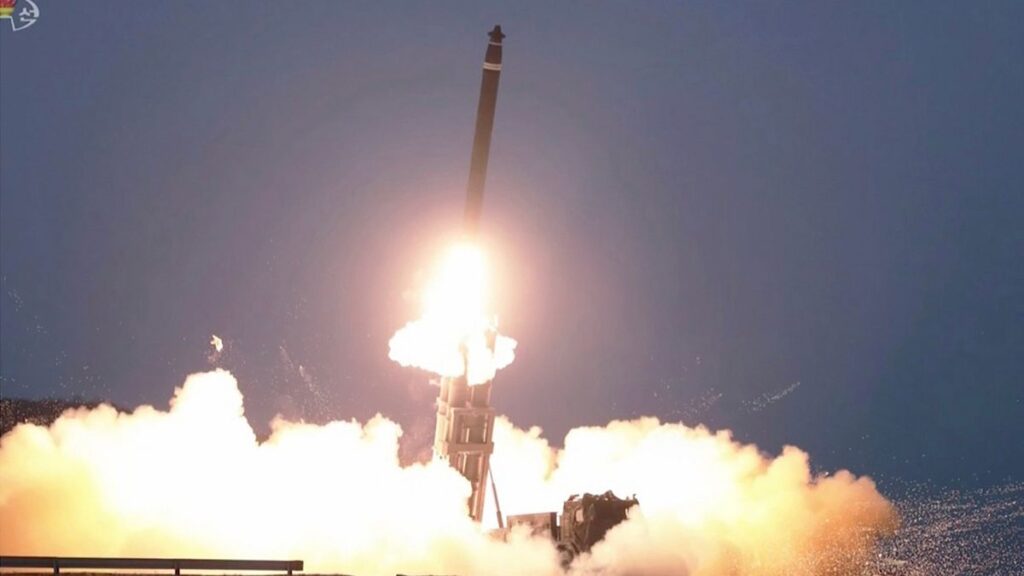The era of nuclear disarmament is coming to an end while new technologies push the risk of nuclear conflict higher, SIPRI warned on Monday.
The Stockholm International Peace Research Institute (SIPRI) stressed in its annual assessment of the state of armaments, disarmament and international security, that although the number of nuclear warheads in the world continued to decline last year due to the US and Russia dismantling retired warheads, the pace of such dismantlements is slowing down.
The rate at which new warheads enter global stockpiles could therefore soon outpace dismantlements, SIPRI said, as nuclear states pursue modernisation programmes.
“The era of reductions in the number of nuclear weapons in the world, which had lasted since the end of the Cold War, is coming to an end,” Hans M. Kristensen, Associate Senior Fellow with SIPRI’s Weapons of Mass Destruction Programme said in a statement.
“Instead, we see a clear trend of growing nuclear arsenals, sharpened nuclear rhetoric and the abandonment of arms control agreements,” he added.
Nine countries – the United States, Russia, the United Kingdom, France, China, India, Pakistan, the Democratic People’s Republic of Korea (North Korea) and Israel – have nuclear warheads in their arsenals with an estimated global inventory of 12,241 warheads, of which 9,614 were in military stockpiles for potential use.
Just over 2,000 of the deployed warheads, nearly all of them belonging to the US and Russia, were kept in a state of high operational alert on ballistic missiles.
The two countries faced challenges in their modernisation programmes last year, but SIPRI forecasts that their deployments of nuclear weapons will rise in the years ahead.
China’s nuclear arsenal, which currently counts at least 600 warheads, is meanwhile growing faster than any other country’s, by about 100 new warheads a year since 2023. SIPRI estimates that China could potentially have at least as many Intercontinental Ballistic Missiles (ICBMs) as either Russia or the USA by the turn of the decade.
The international security institute also flagged that 2024 saw renewed attention on nuclear-sharing arrangements, which it says carried great risks. These included claims by Russia and Belarus that Russia has deployed nuclear weapons on Belarusian territory, European NATO allies expressing willingness to host US nuclear weapons on their soil, and statements by French President Emmanuel Macron that the country’s nuclear deterrent could have a “European dimension”.
“It is critical to remember that nuclear weapons do not guarantee security,” said Matt Korda, associate senior researcher with SIPRI’s Weapons of Mass Destruction Programme.
“As the recent flare-up of hostilities in India and Pakistan amply demonstrated, nuclear weapons do not prevent conflict. They also come with immense risks of escalation and catastrophic miscalculation—particularly when disinformation is rife—and may end up making a country’s population less safe, not more.”
The increased use of Artificial Intelligence (AI) and other technologies to speed up decision-making in crises meanwhile increases the risk of a nuclear conflict breaking out as a result of miscommunication, misunderstanding or technical accident, according to SIPRI.
The annual report, which looks at the overall armament picture, found that global military expenditure rose for the 10th consecutive year in 2024 to $2.7 trillion (€2.3 trillion), driven by Russia’s ongoing full-scale invasion of Ukraine.
Washington however remained the largest military spender in the world, with spending of $997 billion (€861 billion) in 2024, more than three times the amount spent by China, the next biggest spender. Total European spending increased by 17%, with all countries, bar Malta, boosting their military expenditures.
Just five countries – the United States, France, Russia, China and Germany – accounted for 71% of all military exports with the US growing its share to 43% from 35% at the turn of the decade.
Ukraine, India, Qatar, Saudi Arabia and Pakistan together accounted for 35% of total arms imports.
Read the full article here

